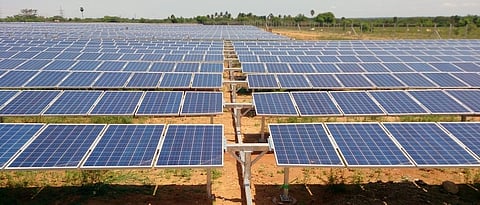IISER Thiruvananthapuram-IIT Indore develop efficient artificial light-harvesting system
Centered on the process of photosynthesis, a new highly efficient artificial light-harvesting system has been developed by a group of researchers from Indian Institute of Science Education and Research (IISER) Thiruvananthapuram and Indian Institute Technology (IIT) Indore. The system has the capability of efficiently capturing light for conversion to power. The results from the study have been published in the distinguished Royal Chemical Society - Chemical Science journal.
More about the research
The paper, co-authored by IISER Chemistry department's Sukhendu Mandal and research scholars Sourav Biswas and Anish Kumar Das, and IIT Indore Chemistry dept's Professor Biswarup Pathak, shows that the harvested energy could generate power. The team was able to come up with an artificial system that can be used as a base for designing new light-harvesting materials. These, in turn, can enhance the efficiency of solar cells.
There have been numerous attempts, across the world of science, to replicate photosynthesis' light-harvesting capability in engineered systems for utilisation in artificial leaves or solar cells, but in vain.
The previous lab attempts at duplicating the light-harvesting mechanism's atomic and molecular structure failed, owing mainly to the light being quenched because of aggregation or clumping up of molecules together. This would lead to conversion efficiencies being impacted with poor light capture. However, the IISER TVM and IIT Indore teams resolved the aforementioned problems.
How did researchers overcome previously caused problems?
The atomically precise molecule developed by the team "is a 16 silver atoms-ligand-cyclodextrin assembly that acts as a donor and β-carotene as an acceptor. This is the first time we have utilized atom-precise nanocluster in such an application," the researcher explained.
"The opposite charges on the surfaces and the matched electronic energy distribution result in a 93 per cent energy transfer efficiency with a great antenna effect from the UV-to-visible region of the light spectrum," he noted.
The research has the potential of providing the basis to produce new light-harvesting materials that could improve solar cell efficiency and, thus, reduce energy loss. "This is important given that India aims to achieve net zero carbon emissions by 2070 and to meet 50% of its electricity needs from renewable sources such as solar power by 2030," the team added.
Even though it is a lengthy process till the apt results are met, such research is vital in getting closer to efficiency enhancement and making solar energy generation mainstream.
With inputs from IANS
To get all the latest content, download our mobile application. Available for both iOS & Android devices.

